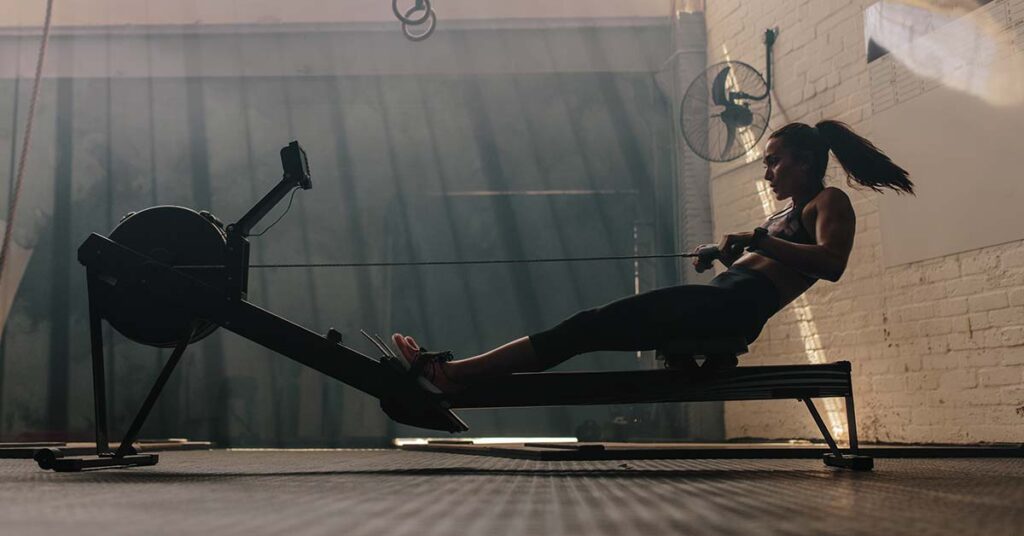
Earlier I wrote an article about the problems with scientific research .
Research on training methods, diet methods or the effect of different types of cardio runs into exactly these problems. Studies cost a lot of money, research groups are small, studies do not correct or do not correct for diet and other activity the rest of the day, studies do not correct for stress or inflammation, etc.
It is absolutely good to keep scientific research as the basis of your approach and vision, but dare to look further and be critical. If a study says there’s no difference between fasted or fed cardio, it doesn’t necessarily apply in all cases. If a study does not find a difference between HIIT or LISS, it does not mean that there is only a difference in energy consumption per unit of time.
HIIT OR NOT?
Another question I see and get a lot is what is a better form of cardio: HIIT or steady state (aka LISS)?
Again, context is very important in this story; first try to answer the question what is the purpose of the cardio and also what is the context in which that cardio is performed. HIIT will be more efficient per unit of time, but what about recovery capacity? How is your training structured at the moment? For example, HIIT has a greater effect on growth hormone production than steady state cardio, but if you are currently running a metabolic training block, the effect of HIIT will be relatively smaller than if you are running a neuro block.
In the first case, adding HIIT may even cause inflammation due to the overlap, especially when you are in the deeper phases of a cut. In this case, adding HIIT might just have a completely different effect from what you’re trying to achieve; recovery through the gutter, fluid retention through inflammation, decline in strength, build-up of fatigue and overuse of glycogen.
At the beginning of a cut phase, recovery is often better and nutrient and carbohydrate intake higher than at the end. This would mean that HIIT has potentially less negative effects here.
Because HIIT will put a lot more of a burden on your recovery than LISS, it’s wise to plan high-intensity cardio earlier in the cutting phase as described, but another shorter-term focus is where you plan your HIIT sessions in the week. If Tuesday is leg day, a heavy HIIT session on Monday might not be wise. You can of course also choose to do only concentric work as HIIT, such as pushing a sled, or sprinting on a bicycle. This will limit muscle damage, potentially requiring less recovery.

FASTED VS FED CARDIO
As mentioned, I want to delve a little further into fasted cardio versus fed cardio. Typically, people do their fasted cardio at low intensity.
As mentioned earlier in this article, according to studies, it makes little difference whether you do cardio fasted or not; the total energy deficit per day is all that matters. However, we also briefly discussed the problems with research and we also know that if a research does not find an extra effect from a certain approach, this does not necessarily apply in all circumstances. Absence of clear results often means that if there are differences, these differences will not be large. If fasted cardio really was much better for fat loss, several studies would have shown this by now.
‘COMPLIANCE’
Do we completely write off fasted cardio with that? No, not so fast. We are not dealing with robots or machines, but with people. Results are always greatly influenced by emotion; placebo effect is extremely strong in humans.
A perfectly written training schedule that stays in the closet will provide less good results than a ‘3/10 would not hit’ schedule that you neatly run week in week out. The most important thing for progression in training and diet is complying with it, sticking to it and working regularly. Compliance in English.
So let’s first say that if you prefer fasted cardio, you should keep doing it. Because what I just said applies both ways; research doesn’t show that fasted cardio is much better for fat loss, but certainly not much worse for muscle loss.
OPTIMIZING FAST CARDIO
One method that is sometimes used because it would offer the best of both worlds is to take some protein or BCAAS and nothing else before starting your cardio. This would provide too little energy to complete the cardio, but would protect muscle mass from breakdown. However, I’m going to assume that you want to lose weight in this context. In that case, your glycogen stores are not fully filled and your liver may even be busy making glucose from amino acids. In that case, giving your liver another task will probably lead to more stress in the system.
Glycogen is very anti-catabolic and works well against muscle breakdown. In this context, it would therefore be wiser to do your fasted cardio when the muscles that perform the cardio have at least some glycogen in stock and certainly the liver also has a reserve of glycogen. If you want to do fasted cardio, taking some fruit before bed may be a good idea.

SUPPRESS THE NEGATIVE EFFECTS
We have now described a number of scenarios in which (more) cardio is counterproductive. However, we can certainly take steps to reduce these negative effects. I have already mentioned adding some fruit for bed. We can also take a few grams of BCAAS/EAA’s and some fast carbohydrates during cardio to put the stress on the system and limit the chance of the liver having to crank up gluconeogenesis. However, nothing is free, not even these adjustments. The steps I describe here all cost some space in your limited kcal budget, while you do the cardio to increase your calorie budget. Finding a sweet spot between these 2 is therefore important.
I think you now have a pretty complete picture of which forms of cardio are due to this article in combination with the 2 previous ones. We also looked at which factors you should take into account when you apply HIIT cardio or prefer LISS cardio.
I want to write 1 more follow-up article to complete the story. In this I want to discuss the further effects that cardio has on our body, how best to periodize cardio and which factors in life are important for the considerations that you have to make in this area.
